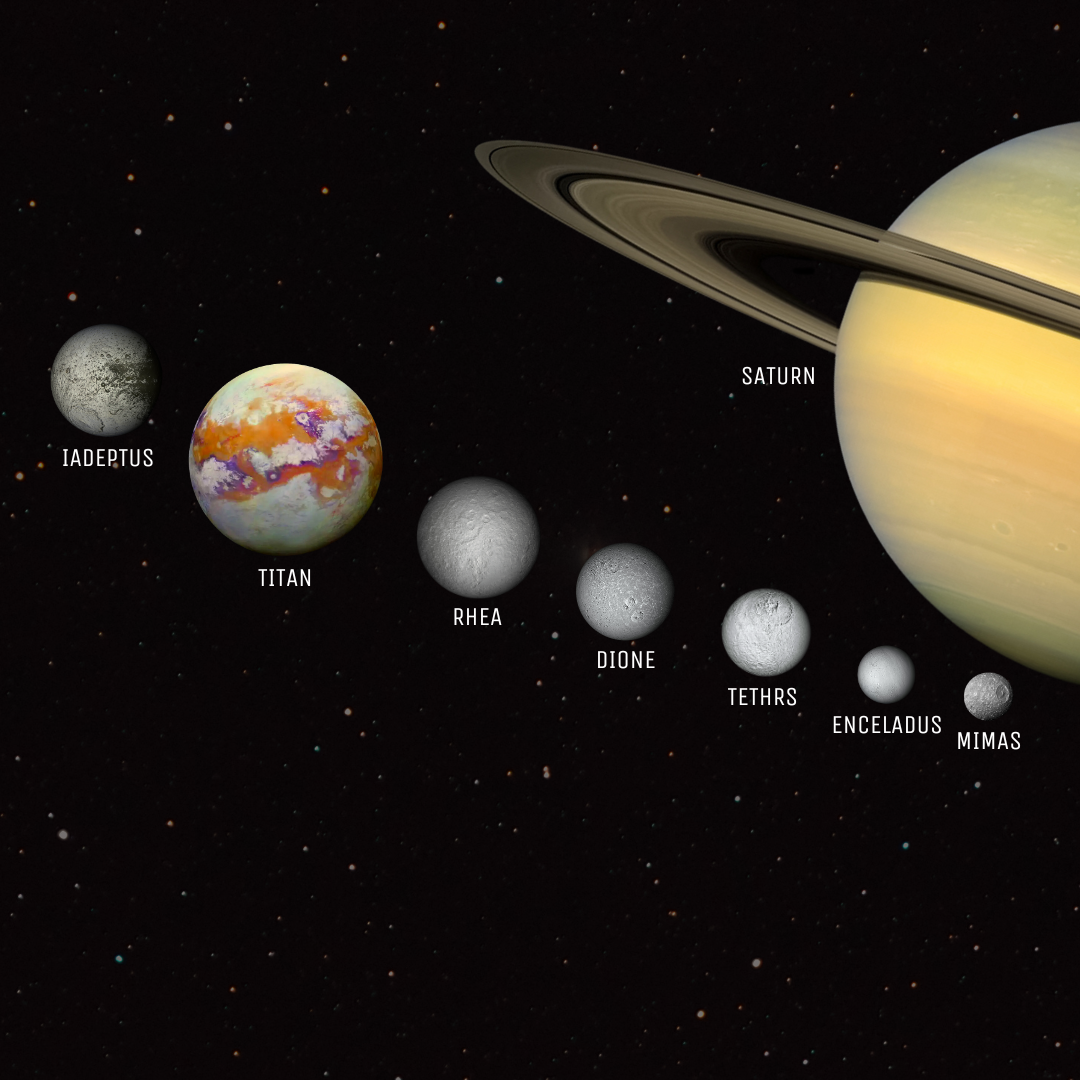
Solar System: Saturnian System
Saturn, the sixth planet from the Sun, is orbited by a diverse and complex system of moons. From the colossal Titan to the icy Enceladus, these satellites provide insights into the formation and evolution of celestial bodies in the Solar System. This article aims to provide a detailed overview of Saturn's most prominent moons, highlighting their unique features and importance in the context of planetary science.
- Titan: The Earth-like Moon with a Thick Atmosphere
Titan, with a diameter of 5,150 km, is the largest moon of Saturn and the second-largest moon in the Solar System. It possesses a thick, nitrogen-rich atmosphere that contains trace amounts of methane, ethane, and other organic compounds. This atmosphere, which is even denser than Earth's, has led to the formation of Earth-like features, such as dunes, rivers, and lakes composed of liquid methane and ethane. Titan's subsurface is believed to harbor a liquid water-ammonia ocean, which could potentially support life. The Cassini-Huygens mission, which arrived at Saturn in 2004, provided invaluable data on Titan, including the first images of its surface and insights into its atmospheric processes.
- Enceladus: The Active Ice World
Enceladus, a small moon with a diameter of 504 km, is one of Saturn's most intriguing satellites. Its surface is primarily composed of water ice, with a vast subsurface ocean believed to exist beneath the icy crust. Enceladus is geologically active, with the south polar region exhibiting a series of fissures known as "tiger stripes." These fissures are the source of cryovolcanic plumes that eject water vapor, ice particles, and organic compounds into space. These discoveries have made Enceladus a prime target for astrobiology missions in search of extraterrestrial life.
- Mimas: The Moon with a Giant Crater
Mimas, with a diameter of 396 km, is one of Saturn's smaller moons. Its most distinctive feature is the enormous impact crater Herschel, which has a diameter of 130 km and a depth of 10 km. The impact that created Herschel is believed to have been so powerful that it almost shattered Mimas, leaving the moon with a heavily scarred and cratered surface.
- Iapetus: The Two-faced Moon
Iapetus, with a diameter of 1,470 km, is known for its peculiar two-toned appearance. One hemisphere is covered with bright ice, while the other is coated in a dark, reddish material. The origin of this dichotomy is still under investigation, but it is believed that the dark material could be the result of micrometeorite impacts or a combination of internal and external processes. Iapetus also has an equatorial ridge that stretches over 1,300 km, making it one of the most distinctive features in the Solar System.
- Dione and Rhea: The Icy Sister Moons
Dione and Rhea, with diameters of 1,123 km and 1,527 km, respectively, are both composed primarily of water ice. They share similarities in their geological features, such as the presence of impact craters, chasms, and fractures. Both moons are believed to have subsurface oceans, although
